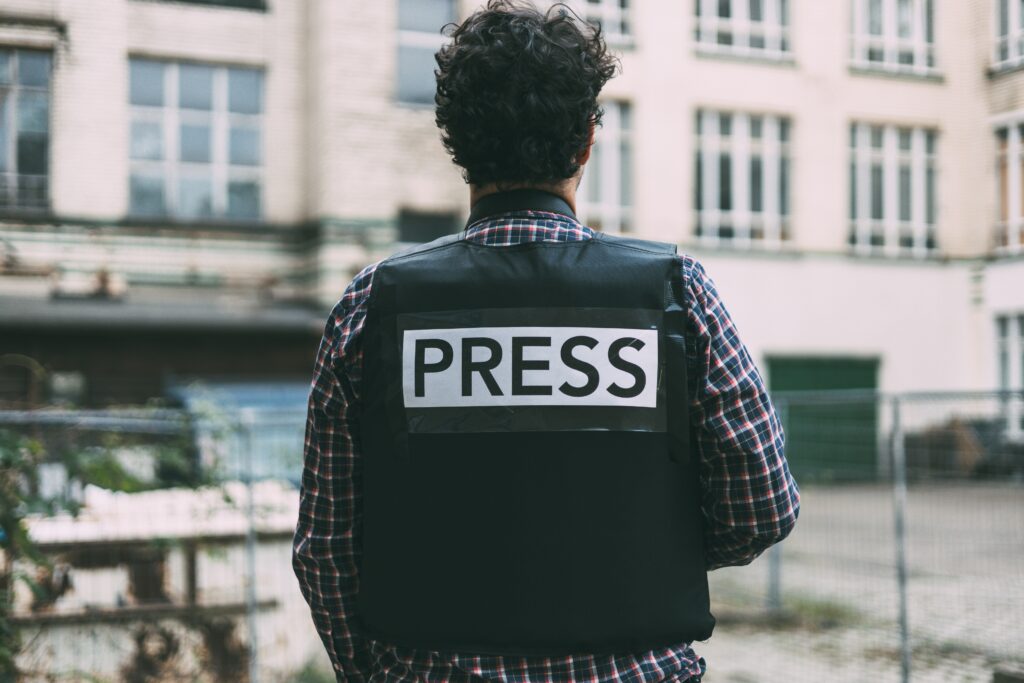Many journalists covering Hamas atrocities can’t be trusted – here’s why
January 9, 2024
We should not be surprised when journalists in Gaza are shown to be supporters of Hamas. We should possibly be outraged but not surprised. The latest story is that two photojournalists who have been used by AP and Reuters seem to be celebrating the October 7 attacks.
This is not a surprise, because this is just how this sort of journalism works.
The implication of this is that we should not trust, or at least be very wary of, journalism that comes from these places. Yes, that includes the majors like the New York Times, AP, Reuters, and so on. The problem is built into the very system used to collect news and do the reporting.
This latest bout of the story is at Honest Reporting.
A Gaza photojournalist working for international media called on residents of the coastal enclave to cross the border into Israel on October 7 after Hamas terrorists had breached it, an HonestReporting investigation has found.
Mohammed Fayq Abu Mostafa, a freelancer who has been working for Reuters, made the comments while excitedly displaying footage of Hamas atrocities on an Instagram Live hosted in Gaza by another photojournalist, Ashraf Amra.
Amra has been working for AP, Reuters and APA Images, as well as for Turkish agency Anadolu. The investigation also found Amra had been honored with kisses by Hamas leader Ismail Haniyeh on two previous occasions.
The revelation casts doubt on the journalistic impartiality of the two freelance photojournalists and the vetting procedures of media outlets that have relied on their work.
There’s also the Twitter version with videos and so on.
We agree that this is troubling. But it’s not unusual. This is simply a function of how the news business works. We’ve also pointed this out before, here and here. We’re no doubt going to have to point it out again in the future.
It’s a function of the structure. Journalism is divided into two groups: those on staff and freelancers. When we talk of foreign reporting, this means the difference between a correspondent – staff – and a stringer – a freelance who might have a part-time contract. Correspondents are usually from the home country of the newspaper or TV/radio station. Stringers are near always locals to the area being covered. That’s just the way the business is structured.
Before October 7, there were no correspondents – foreigners – as reporters in Gaza by the definition above. What there was were locals, stringers, and freelancers. This has not changed much since then, either.
Now, it’s possible to be lenient about this, but the end result is the same. Precisely because all journalists in Gaza are locals, Palestinians, then the reporting from Gaza is going to reflect local views, preoccupations and beliefs. We could say that this means that all reporting is from people who agree with Hamas. Or, we can be more lenient. Hamas is – obviously – a particularly bloodthirsty, vicious and violent government. All those locals working for AP, Reuters and so on live under Hamas, as do their families and friends. So, Hamas gets to determine their reporting – that’s what happens when the men with guns have all the power, they have all the power.
It’s the outcome of this which is important. All and any reporting from Gaza itself is what Hamas allows to be reported. Either because the reporters agree with Hamas or because they are ruled by Hamas. Because all of those reporters are indeed, as are their families, ruled by Hamas. Who, you know, just went and killed hundreds of kids at a music festival, which is the sort of lesson few reporters need to have underlined for their own families.
Sure, we should be demanding that AP, Reuters and all the rest make this clear to us. But the truth is that for all of us, we simply cannot trust news reports coming out of Gaza. For exactly the same reason that back when we wouldn’t have trusted – and shouldn’t have trusted – news from Berlin if the only reporters were members of the Nazi Party, or people who lived under the Nazis, where the Nazis knew where their parents, wives and children lived. Or, if you prefer your example from a different part of the spectrum, replace it with Moscow in the 1930s and the communists.
Every journalist reporting from inside Gaza is a local, living under that local government of Hamas. This news we get from inside Gaza is Hamas-approved, either by belief or by terror.
We’d all hope it could be different from this, but it isn’t.
